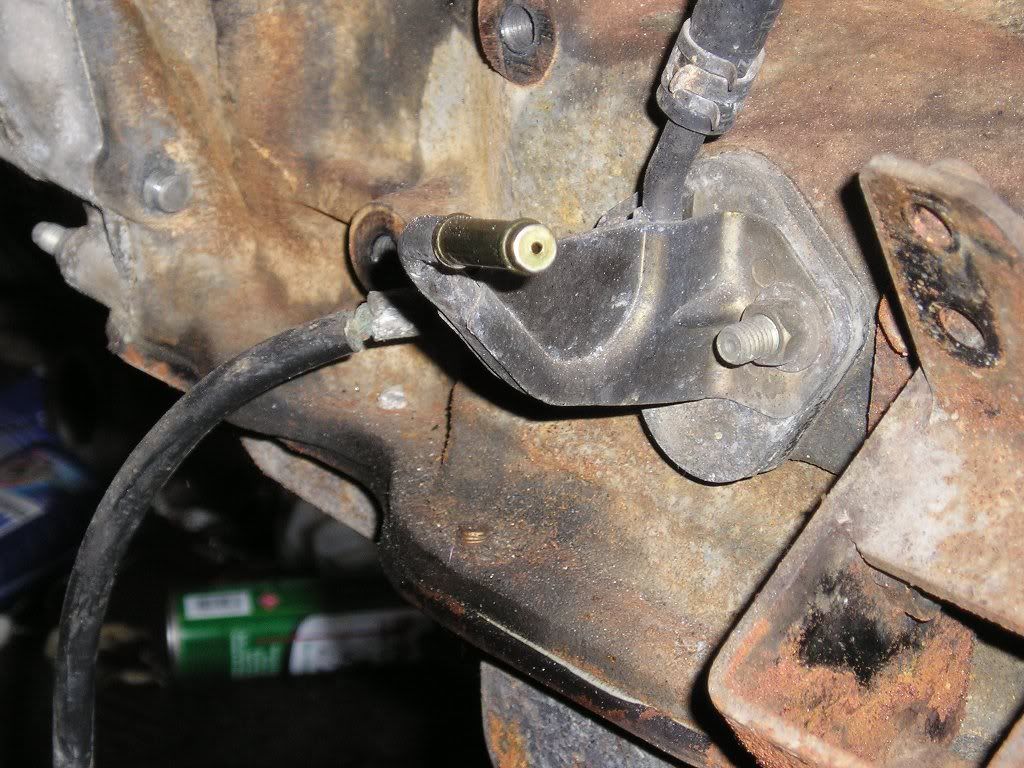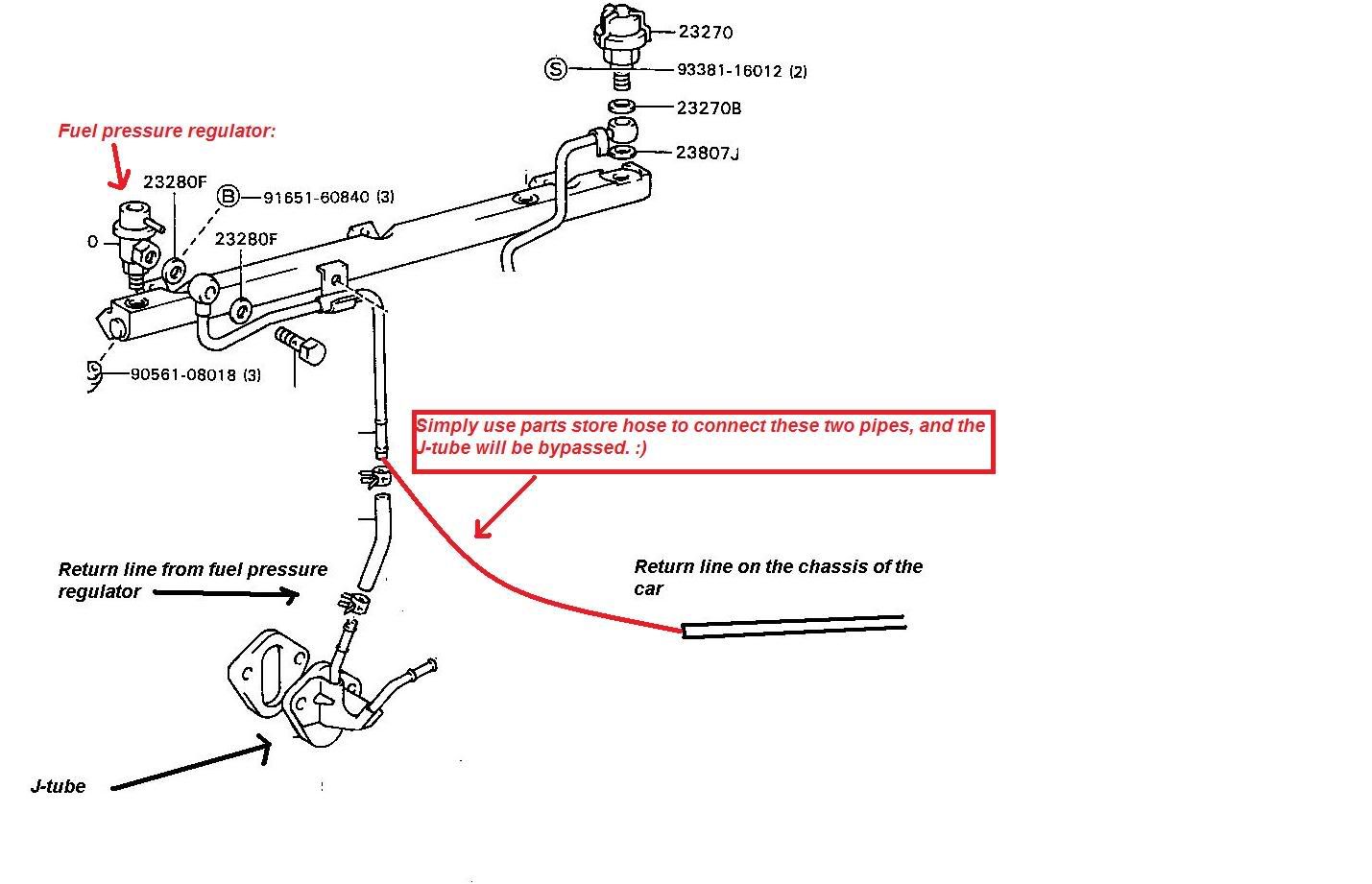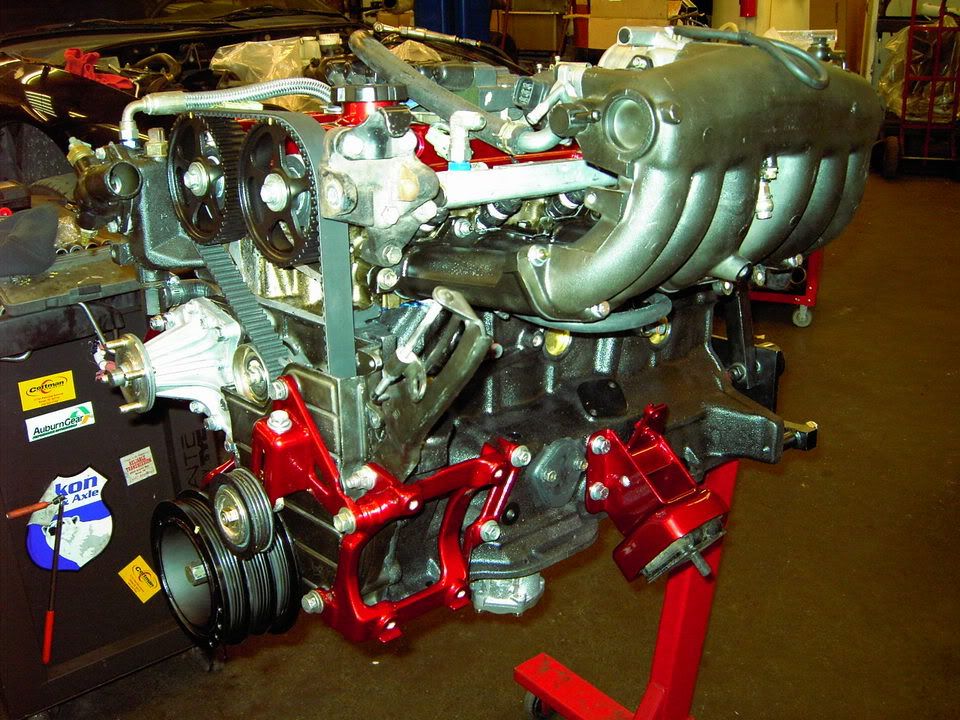a common modification to the fuel system is a larger pump, usually coupled with larger injectors, possibly removing the fuel pulsation dampener, and an aftermarket fuel pressure regulator. when uprading fuel pumps, it's essential to bypass, or drill out the stock j-tube.
the J-tube is a restriction in the return line of the fuel system, located after the fuel pressure regulator, and is bolted on to the side of the block below the intake manifold. the purpose of the j-tube is 1) cover the hole in the side of the block from the previous M series motors that used a manual fuel pump, and 2) to serve as a sort of second fuel pressure regulator. in this case, if the fuel pressure regulator on the fuel rail malfunctions and will not retain presure, the j-tube's restriction (the pin hole) will provide enough backpressure in the fuel system to allow you to "limp" home, or to a garage.
if you look at the following picture, you can see the end of it only has a pin hole to let fuel through. with this restriction still in place, the line cannot flow enough fuel to satisfy an aftermarket high flow pump (such as the MKIV TT pump, the walbro 255lph, and others) the pin hole provides TOO MUCH back pressure on the system, thus causing a rich running condition (too much fuel), black smoke, and bad over all performance.

to drill it out, all you have to do is get a bit that's slightly smaller than the inside diameter of the pipe, and drill it out. blow the remnants of metal flakes out with compressed air, or something similar.
simply bypass it, just get some fuel hose from your local autoparts store, and run it directly from the fuel pressure regulator (follow the stock line), right to the under-body hard line. (make sure you clamp it!)
or to remove it completely, you could go on summitracing.com and get [edit: thanks, bryan!] a big block chevy block off plate, (it bolts right on, and comes in pretty colors), or you could simply pull yours off (two nuts), and chisel the j-tube off, grind off the slag, sand, and paint (which is what i did).
then use rubber line (or in my case, SS braided from an aftermarket AFPR) to the under-body hard line.
-shaeff
so, we need to bypass it completely, or drill out the restriction.
Edit: Here's another diagram to use if you just want to bypass it altogether:

the J-tube is a restriction in the return line of the fuel system, located after the fuel pressure regulator, and is bolted on to the side of the block below the intake manifold. the purpose of the j-tube is 1) cover the hole in the side of the block from the previous M series motors that used a manual fuel pump, and 2) to serve as a sort of second fuel pressure regulator. in this case, if the fuel pressure regulator on the fuel rail malfunctions and will not retain presure, the j-tube's restriction (the pin hole) will provide enough backpressure in the fuel system to allow you to "limp" home, or to a garage.
if you look at the following picture, you can see the end of it only has a pin hole to let fuel through. with this restriction still in place, the line cannot flow enough fuel to satisfy an aftermarket high flow pump (such as the MKIV TT pump, the walbro 255lph, and others) the pin hole provides TOO MUCH back pressure on the system, thus causing a rich running condition (too much fuel), black smoke, and bad over all performance.

to drill it out, all you have to do is get a bit that's slightly smaller than the inside diameter of the pipe, and drill it out. blow the remnants of metal flakes out with compressed air, or something similar.
simply bypass it, just get some fuel hose from your local autoparts store, and run it directly from the fuel pressure regulator (follow the stock line), right to the under-body hard line. (make sure you clamp it!)
or to remove it completely, you could go on summitracing.com and get [edit: thanks, bryan!] a big block chevy block off plate, (it bolts right on, and comes in pretty colors), or you could simply pull yours off (two nuts), and chisel the j-tube off, grind off the slag, sand, and paint (which is what i did).
then use rubber line (or in my case, SS braided from an aftermarket AFPR) to the under-body hard line.
-shaeff
so, we need to bypass it completely, or drill out the restriction.
Edit: Here's another diagram to use if you just want to bypass it altogether:





